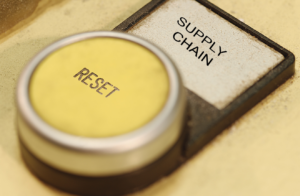Analysts often write about the consumer digital path to purchase as if it were a single and straight forward course. Nothing could be further from the truth. In fact, consumer paths to purchase are increasingly complex. As a result, in today’s world, the customer is king and they want royal treatment. Sally Rothman, Director: Director Retail Shopper & Consumer Panel at South Africa, writes, “According to GfK’s Retail Trend Monitor 2017, a 51-country survey of retailers and industry experts, convenience of the shopping experience (89%) is the leading driver of current retail developments, but personalized marketing and the seamlessness of the cross-channel experience will gain in relevance. Against this backdrop, manufacturers and retailers understand that the power rests in the shoppers’ hands in a world of global competition, always-on connectivity and on-demand services. Brands need to fight hard for every customer conversion, then battle to retain each customer they have won. No brand has a free pass to success and no business model is guaranteed to survive.”[1] Although I agree brands need to fight hard for every customer conversion, the hardest challenge today may be getting them on your specific path to purchase in the first place.
Digital path to purchase complexity
In the early years of the World Wide Web, the digital path to purchase referred to consumers who surfed websites on their desktops PCs looking to buy something. In those days, websites were mostly online versions of sales catalogs people were used to receiving through the mail. As websites matured and became more interactive, consumer expectations began to rise. The biggest advance in the digital path to purchase came with the introduction of the smartphone. For the first time, the digital path to purchase became mobile. As familiarity with smartphone technology increased, so did e-ecommerce. Today, the digital path to purchase refers to consumers buying anytime, from anywhere, with any device. Michael Jones (@mdjonesy), a business consultant explains, “Online, offline, mobile. E-commerce, m-commerce, brick and mortar. These things are beginning to blur more and more, because, really, only one thing matters: Your customers, and your customers are digital. It doesn’t matter if they’re in your store with phone in hand or browsing on a tablet from their couch. They want one seamless experience, and they don’t care what you call it.”[2]
Despite the Retail Apocalypse currently disrupting brick-and-mortar merchants, Li Yuan (@LiYuan6) reports e-tailors are beginning to understand the importance of having both a virtual and physical presence. She explains, “One certainty is that the line between online and offline retail is blurring, and companies are learning the importance of leveraging both. … A competitive advantage that companies gain in navigating both online and offline retail is the access to more consumers and better data about them.”[3] Steve Halford, Group Managing Director of Crystal, writes, “This isn’t a simple battle between online and bricks and mortar. The challenge is combining the two into a seamless, slick, omnichannel experience that matches how people are getting used to buying and how they like to buy. The first, crucially important part of the customer journey takes place mostly online, before formal contact is made. The challenge is in coping seamlessly with buying anytime, from anywhere, with any device. And in managing customers’ different information needs.”[4]
Dealing with digital path to purchase complexity
Today’s “anytime, anywhere, any device” consumer mindset begins with research. According to iVend Retail’s 2018 Global Path to Purchase survey, “91.4% of shoppers admitted to researching products online before making purchases at physical stores, 83.8% have done the opposite and more than half of respondents said they used buy online/pick up in-store services.”[5] Other findings included, “71.6% of consumers said they shop via mobile smartphone at home, while traveling or during their spare time, and 60.1% said they used their smartphones in brick-and-mortar stores.” Rothman asserts complexity will only increase in the years ahead and retailers can best address this complexity by segmenting shopping patterns into two consumer journeys — staying home and going out. She explains:
Staying home. “Consumers will order more and more of the products they need from a PC or smartphone. In the future, smart home sensors may take over some of the functional aspects of shopping, automatically ordering and replenishing basic supplies as they run out. Consumers will meanwhile use virtual and augmented reality to try on clothes, trial appliances and test drive cars — all from the comfort of their homes.”
Going out. “Shopping at the malls will become hyperconvenient, superfast and really simple with in-store GPS navigation, pick-up points, automated payments (no queues) and minimal browsing in the future. Mobile phones will have a key role to play, becoming handheld shopping trip assistants. Retailers will also offer experiences that blend socializing and entertainment. The smartphone will connect the personalized digital and physical retail world, for chatting, browsing, sharing experiences and payment.”
Stuart Hogg, a marketing consultant, suggests five steps you can take to map the consumer journey, regardless of whether they choose the stay at home or going out route.[6] Those steps are:
Step 1. Find the sweet spot where your customers’ goals and your own align. “Before you start journey mapping, nail down your business goals. Any marketing and communication you deliver during the customer journey should be focused on helping your brand reach those goals. However, it’s important to acknowledge that your customers’ goals might be different from yours. … Consider how your marketing and communication strategies can help your customers reach their goals while also getting you closer to yours.”
Step 2. Identify all of the communication touchpoints in your customer’s journey. “When do you traditionally communicate or engage with customers? Make a list of these moments and group them based on when they happen during the journey: pre-purchase, purchase, and post-purchase. Now find communication touchpoints you may have missed. Track what actions and interactions between your brand and your customers happen just before and after each of the pre-purchase, purchase, and post-purchase stages.”
Step 3. Recognize pain points and moments of delight. “How might your customers feel at the pre-purchase, purchase, and post-purchase stages as they attempt to achieve their goals? … Find the moments where your customers might have negative experiences.”
Step 4. Experience the customer journey yourself. “Imagining how your customers might feel during their journey is valuable, but actually experiencing it for yourself can uncover much-needed insights. If your business is run online, open a browser and experience what it’s like to be your customer. Similarly, if you have a brick-and-mortar store, go into a location that sells your product. … And don’t forget about the competition. Become one of their customers and experience the journey they’ve created.”
Step 5. Visualize your customer journey map. “Go beyond just writing down your customer journey and communication touchpoints, and actually create a visual map of them. … By doing this exercise, you’re helping your team take a bird’s eye view of the entire customer journey. … Make sure to create hypotheses around why new communication touchpoints will improve the customer journey, then implement and test them.”
Summary
Hogg admits mapping the customer journey may prove difficult because it’s so complex. He writes, “In an ideal world, the journey people take to become loyal customers would be a straight shot down a highway: See your product. Buy your product. Use your product. Repeat. In reality, this journey is often more like a sightseeing tour with stops, exploration, and discussion along the way — all moments when you need to convince people to pick your brand and stick with it instead of switching to a competitor.”
Footnotes
[1] Sally Rothman, “Helping connected consumers to navigate your path to purchase,” Bizcommunity, 26 October 2017.
[2] Michael Jones, “Omnichannel Is Dead — Just Ask Your Customer,” Forbes, 29 October 2015.
[3] Li Yuan, “The Trend in Online Shopping: Not Shopping Online,” The Wall Street Journal, 22 February 2018.
[4] Steve Halford, “2018: The Year of Omnichannel,” Builders’ Merchants News, 19 January 2018.
[5] Dan O’Shea, “Shopping is going mobile, in-store and out,” Retail Dive, 13 March 2018.
[6] Stuart Hogg, “Customer journey mapping: The path to loyalty,” Think with Google, February 2018.





